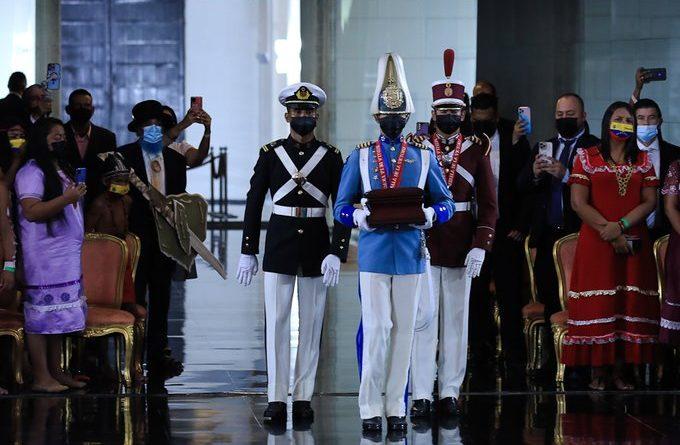
As an act of profound nationalist symbolism, the symbolic remains of G/J Manuel Piar entered the National Pantheon this Thursday, as approved by the President of the Republic and Commander-in-Chief of the Bolivarian National Armed Forces FANB, Nicolás Maduro Moros, on June 18, 2021.
This vindictive historical event is carried out on the occasion of the 248th anniversary of the birth of G / J Manuel Carlos Piar, which occurred in Willemstad, Curaçao.
The symbolic remains of the hero entered the National Pantheon, mausoleum of our heroes where also rest the Liberator Simón Bolívar and other fathers of the Nation, to vindicate General Piar for his feats in the Battle of San Félix (1817), a feat that allowed the Liberator Simón Bolívar take control over the Orinoco River and promote the patriotic mobilization towards the Atlantic Ocean and upriver to Santa Fe, and reach the Apure plains, contributing to the future on the path of the glorious triumph in the Carabobo field (1821) where the definitive independence of Venezuela was sealed…
President Nicolás Maduro leads this act together with the president of the National Assembly (AN), Jorge Rodríguez; the president of the Supreme Court of Justice (TSJ), Gladys Gutiérrez; the president of the National Electoral Council (CNE), Pedro Calzadilla; the president of the Republican Moral Council and Comptroller General of the Republic, Elvis Amoroso; the Ombudsman, Alfredo Ruiz, and the Attorney General of the Republic, Tarek William Saab, as well as Defense Minister G/J Vladmiri Padrino López, and other general officers and admirals who are members of the FANB Military High Command.
Undefeated Generalissimo:
Piar, due to his knowledge in navigation, thanks to the teachings of his father, became a qualified navigator after studying at the Puerto Cabello nautical school, obtaining the rank of Alférez de Navío (Navy Ensign).
He stood out as a strategist and the only hero of independence to have obtained triumphs both at sea and on land.
At the age of 23, he participated in the so-called Gual y España conspiracy, that took place in La Guaira in July 1797.
His military experience and inclination for freedom made him serve the Independence of Venezuela after the events of April 19, 1810, thus beginning his career in the Navy.
He participated in the Naval Battle of Sorondo, fought in the waters of the Orinoco river in 1812.
With the rank of Colonel he was one of the signatories of the Chacachacare Act and joined the Liberating Expedition that landed in Güiria in 1813.
He accompanied Simón Bolívar from Haiti in the first Expedition of Los Cayos (the Cays), at the end of 1815, and then in the first siege of the Castle of Puerto Cabello, he directed the state of siege to the most important Spanish installation in the area.
